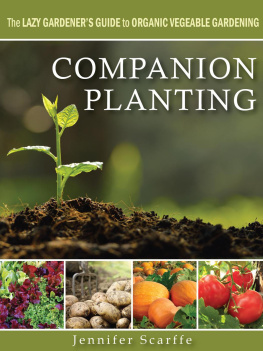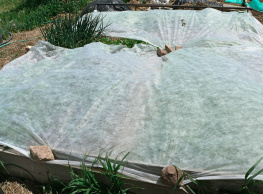This book is copyright protected. This book is only for personal use. You cannot amend, distribute, sell, use, quote or paraphrase any part, or the content within this book, without the consent of the author or publisher.
Disclaimer Notice:
Please note the information contained within this document is for educational and entertainment purposes only. All effort has been executed to present accurate, up to date, and reliable, complete information. No warranties of any kind are declared or implied. Readers acknowledge that the author is not engaging in the rendering of legal, financial, medical or professional advice. The content within this book has been derived from various sources. Please consult a licensed professional before attempting any techniques outlined in this book.
By reading this document, the reader agrees that under no circumstances is the author responsible for any losses, direct or indirect, which are incurred as a result of the use of the information contained within this document, including, but not limited to, errors, omissions, or inaccuracies.
CONTENTS
INTRODUCTION
The first time I heard the word hgelkultur, I laughed. It sounded like my visitor had his mouth full of Jell-O while trying to form his lips into an O. My friend was from Germany and was keeping me company while I puttered around the garden. I was describing to him what I did to my raised beds to save on soil. I load them up one-third or halfway full of dead tree trunks and throw in lots of browns and greens to fill in the spaces. I sift it, add a compost mix, and then the topsoil.
Thats the concept of hgelkultur.
Hoowhat?!
And that was my formal introduction to hgelkultur.
Although I didnt know then that what I was practicing was a well-established and accepted gardening technique, it does tell you a lot about the kind of method that it is: hgelkultur is practical and comes from a place of common sense. I had started using garden waste as filler for my raised beds to save money, but it turned out to be more than just that. With my friends comment, I began to find out more about the funny-sounding term.
I stumbled upon the system because I didnt want to throw away perfectly clean (that is, free of pests, diseases, and chemicals) garden trash.
Considering the immense amount of prunings, trimmings, and clippings I produced every week during the planting season, it gave me a bit of redemption, knowing that I could repurpose my garbage for something beneficial to the Earth, productive in terms of potential harvest, and friendly to the pocket.
It's been a few years now since I started building fertile mounds to enhance my homestead garden, but I feel like I still have so much to explore in terms of organic matter to compost, plants to cultivate, dimensions to build, and locations to try. What is clear is that the gardening system I had stumbled upon contains solutions for insufficient water, unfavorable weather, and even the lean years of food production. Its basic principle follows a clear logic and is easy to execute. It can be a horticultural technique of choice, even for casual gardeners. This was a primary reason for writing this book: to whet your appetite enough to get off the couch and attempt hgelkultur.
HGELKULTUR 101
H gelkultur is a gardening method thats been around for a few hundred years, mostly in what is now known as Germany and Eastern Europe. The term hgelkultur itself became popular only in the 1960s. Its principle is simple: create a fertile area in the shape of a hill that can sustain plant life for a long time without too much human intervention. It does this by creating a complete, self-sustaining environment conducive to life underneath the soil. Its a dream scenario for gardeners who have no love for the daily grind but want to witness something live, grow, and produce under their care. In time, other gardeners learned to apply the same concept to smaller-scale spaces. Nowadays, its no longer unusual to refer to the layering of organic matter done inside a planting container as another example of hgelkultur.
At the heart of hgelkultur is its ability to self-water and self-compost for at least five to six years before needing the reconstruction of its mound. To weekend, water-deprived, and/or lethargic gardeners, it sounds like a dream. Its also a great build for penny-pinchers because youre supposed to source everything you need right from your own gardenno need to visit your local garden shop to complete it.
Anatomy of a Hgelbed
If hgelkultur is the principle and process, then a hgelbed is its product, the nutrient-rich layered and raised plot of soil on which plants can grow with the barest human mediation. If you cut a hgelbed crosswise, you will note that it resembles a lasagna. It has clearly defined layers:
- The innermost stratum of a hgelbed is made up of logs. They will compost slowly to become humus, a plant superfood. Logs also absorb water efficiently, making them something of a godsend in places that lack an abundance of rainfall. The wood at the core of the mound is supposed to be of significant size and/or quantity to soak up as much water/moisture as possible. Smaller branches are piled right over the medium/big wood pieces to add to the mass.
- After the wood layer comes the layer made up of compostables. They could be made of upside-down turf, wood chips, grass clippings, manure, leaves, sticks, twigs, vegetable peels, etc. It can be a single layer or multiple layers of varying/alternating materials. The key is to fill in the gaps among the branches and logs to make a compact, solid hillock that wont cave in at the first rainfall or your golden retrievers paws.
- The third layer is compost, whether from a compost heap or a vermicomposter. Its different from the second layer in that its already been processed by time and the natural elements.
- The fourth layer is your garden soil, fine compost, or any growing medium/mix, which acts as the topsoil.
- The fifth and final tier is mulch to protect the hgelbed from erosion.
You may vary the layer composition, but the rule of thumb is that youre working outward from the densest material to the most permeable, from the slowest to decompose to the fastest. All these layers work together to promote the growth and good health of plants.
Benefits of Hgelkultur
Hgelbeds come with their own benefits to you, your garden, and the greater environment around them:
- They save water. Once theyre constructed and established well, hgelbeds require minimal to no artificial watering. They are their own water catchment.
- They require minimal maintenance. You dont have to water or till them regularly, but you may have to weed them occasionally. Weeds cant help themselves; hgelbeds are like the buffet spread of a five-star hotel to them.












